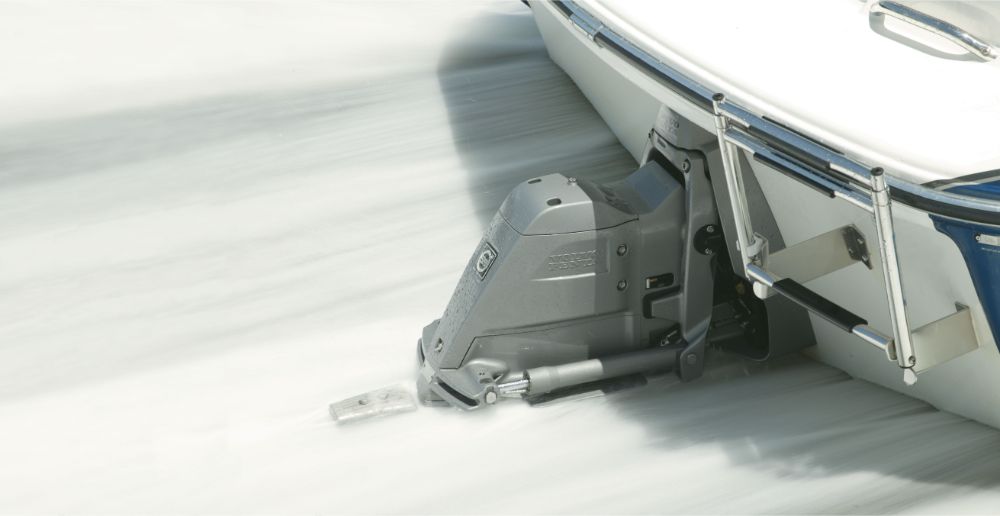Danny Casey looks at how the diesel stern drive package has developed over the years and how it compares today against its petrol outboard equivalent.
There is little doubt that Northern Europeans – in particular the UK’s rigid-inflatable builders and the Scandinavians – are true masters of the light, nimble and rapid powerboat. Many of these boats use outboards, but a lot of the truly outstanding performers are fitted with modern, lightweight, high-speed diesels. To take the UK as an example, whilst the excise-exempt status of marine diesel fuel was controversially rescinded there, making it soar virtually overnight to the level of petrol prices, the enthusiasm for high-speed diesels continues to burgeon.
This writer, a longstanding, dyed-in-the-wool outboard man, concedes that there may just be some applications that might suit such new-generation diesels. Some of the larger automotive companies – such as BMW with the engines it’s suppling to Yanmar for the “BY” series – have also seen potential in the marine engine sector, although if you look back at the ill-judged debacle of BMW Marine in the early-mid 80s, you’d have thought it would well and truly have learned its lesson. However, it appears that the lightweight diesel sector is set for much action in the next decade.
The object of the exercise
We are eventually going to arrive at a considered and objective treatise that examines powering a boat with a new-generation diesel sterndrive versus the more conventional, yet time-proven and refined outboard motor, but it might perhaps be beneficial to go through the unique characteristics, idiosyncrasies and paradoxes that apply to the sterndrive sector. Note that, due to this magazine’s consistently excellent, detailed and enlightening features on outboards and their technology trends over the years, regular readers should require no further elaboration on that front. Selling and buying outboards, whilst challenging, oft-times frustrating and increasingly more time-consuming, is relatively simple, whereas the permutations and pairing of engines and sterndrives are far from straightforward – not least being the fact that there are far more engine manufacturers than there are makes of drive unit.
If you insist on purchasing an integrated, in-house engine/drive package from a single manufacturer, there are only three companies that can help you: Mercury, Volvo Penta and Yanmar. Therefore, with the stark reality that these three companies make the only proprietary sterndrive units, many otherwise excellent first-choice engines (such as Steyr, Hyundai, Nanni and Sole) can only be purchased as part of a hybrid/OEM package. However, of the three sterndrive manufacturers, only Mercury supplies units on an OEM basis to such business partners who, in reality, are also its competitors.
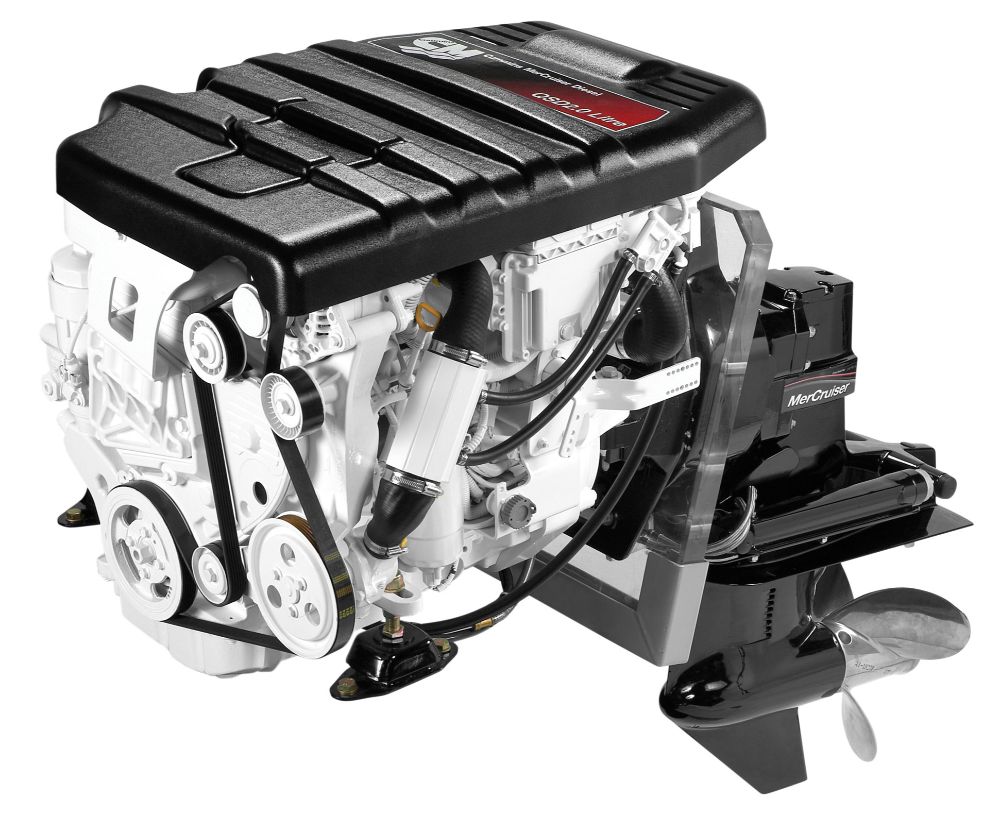
Then and now
To go way, way back……it is no secret that the old Outboard Marine Corporation (OMC) was an unabashed, out-and-out exponent of the outboard motor to the extent that it never totally “got” the whole sterndrive thing. However, some of its later and final offerings – including the then cutting-edge Steyr-sourced 205hp King Cobra – indicated that it may eventually have begun to see the light. Yamaha, on the other hand, was an avid proponent of sterndrives from way back, and with a logical diesel-engine partner in Toyota, had been resolutely chipping away at a sector in which Brunswick/Mercury had traditionally held a market share of over 70%. For reasons still unfathomable to this writer, Yamaha unexpectedly and terminally shut down its entire sterndrive business, just as the twin-prop TRP leg was gaining huge acceptance and respect worldwide, and just as a magnificent new, beefed-up and technologically-advanced leg – coupled to the same new V8 Toyota diesel that Yanmar introduced last year – was being readied for launch. The irrational and injudicious cessation of Yamaha’s sterndrive business notwithstanding, other established manufacturers offer superb, lightweight, high-tech diesel engines suitable for sterndrive applications.
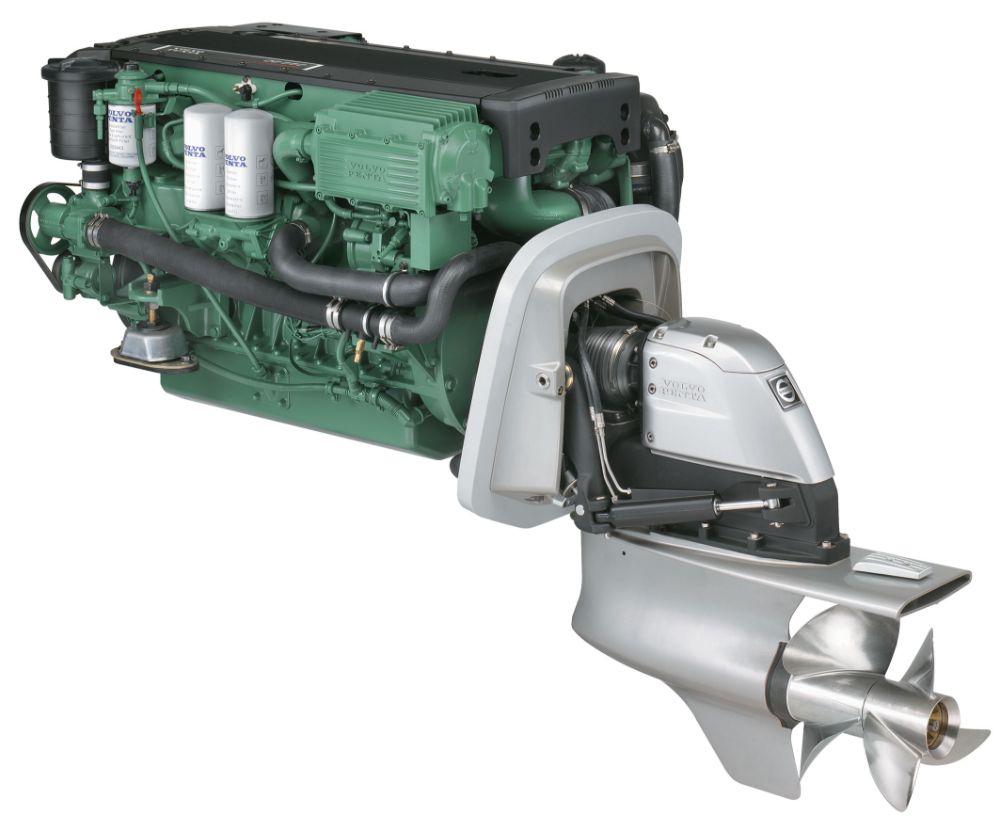
New blood
Volkswagen was solidly – albeit ploddingly – on its way to eventually becoming a force in the diesel/sterndrive segment in Europe, and making significant inroads into the OEM market as well as the repower/petrol-replacement segment. However, for reasons known only to Volkswagen, it decided that it would no longer commit to the spadework and slog of establishing the brand against the major players and elected to become an OEM supplier to one of the main brands, CMD, now simply known as MerCruiser TDI. This is hard to comprehend; Volkswagen will now begin to achieve the volumes it wanted, but the identity has been extinguished and brand equity buried forever on an extremely worthy product that now goes under the MerCruiser name.
The same “surrender-and-side-with the-enemy” mantra does not seem to apply to Hyundai, however, which is on the type of huge assault reserved for those either cockily sure of themselves or wholly oblivious to any pitfalls. In a plan in which hubris-laced bravery is possibly equalled by innocence, Hyundai is aggressively gunning for significant gains in the next few years. Interestingly, their sterndrive-compatible units have several similarities with the erstwhile Volkswagen product: they both have lightweight inline units (a 4-cylinder 170hp for Hyundai and a 5-cylinder 165hp for Volkswagen plus a 250hp V6 for Hyundai and a Volkswagen V6 with variants from 225-265hp).
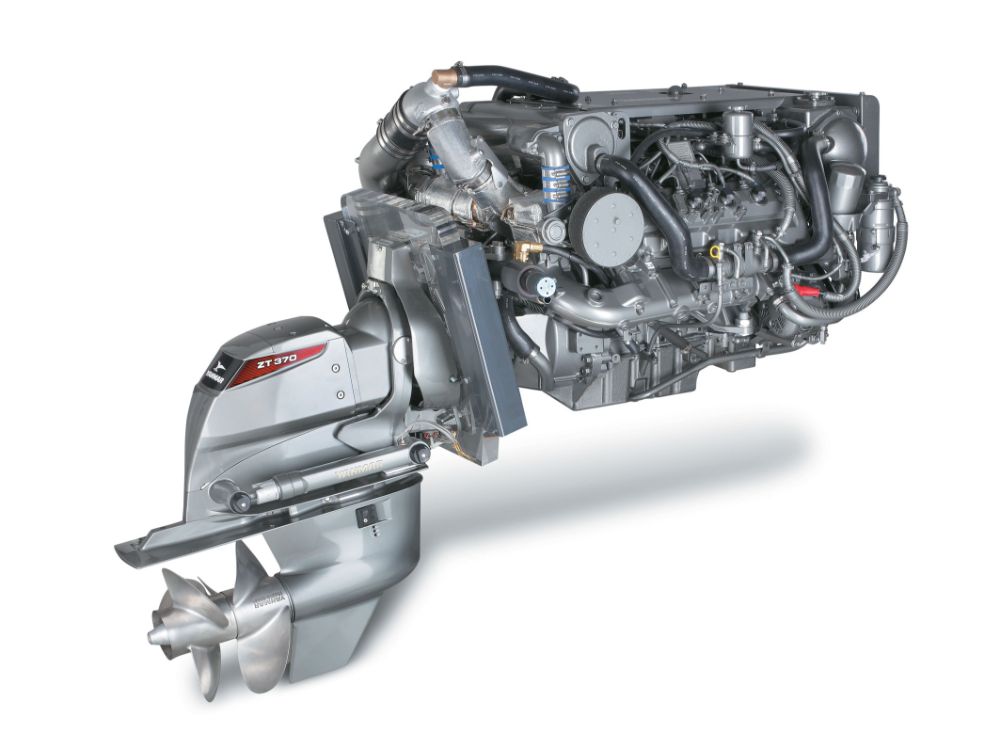
Is a new product assured of success?
To further touch on Hyundai, one of the world’s largest power train manufacturers in its own right: how could it hope to encroach upon MerCruiser’s market share using a drive unit supplied by that very manufacturer? A clue to the future could lie in the fact that, as a power train manufacturer, Hyundai has more than a little experience in producing gearboxes of all types, including marine units (albeit of the huge, commercial-shipping variety). Any company with a theoretical capability to eventually produce its own proprietary sterndrive – a key factor that ultimately stymied Volkswagen’s efforts and which will undoubtedly restrict the market-capturing abilities of Steyr, Nanni et al – would be a formidable player. Take Yanmar, for example, which is now bound to be seeing gratifying results in the sterndrive sector as a result of no longer being ridiculously beholden to its biggest competitor.
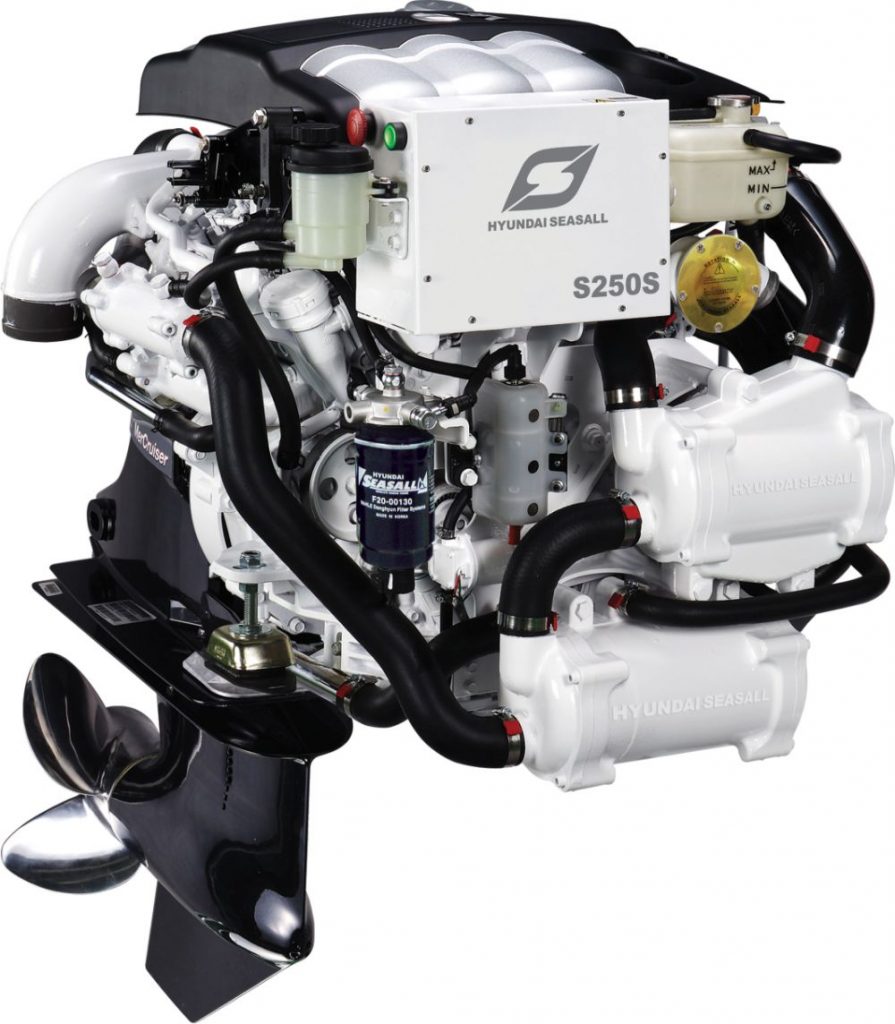
A possible untapped market
One thing all these engines have in common is low weight; they are in fact lighter than the GM petrol in-line 4s, V6s and V8s in those horsepower categories – ideal repower candidates for those who may want to sympathetically upgrade an older Sea Ray, Bayliner or Four Winns (or any of the excellent domestic brands) to which they have become so attached over the years that they just can’t bear to part with it. Of course the hardened cynics out there know all about the “heart-over-head” folly of overcapitalising an old boat, but this writer reckons that this is one of the few market segments which could see significant growth. With the current gloomy financial outlook and torpid economy, you’d be surprised how many people would gladly shell out forty to fifty grand to give a much-loved old boat a new lease of life rather than spending maybe four times that on a replacement.
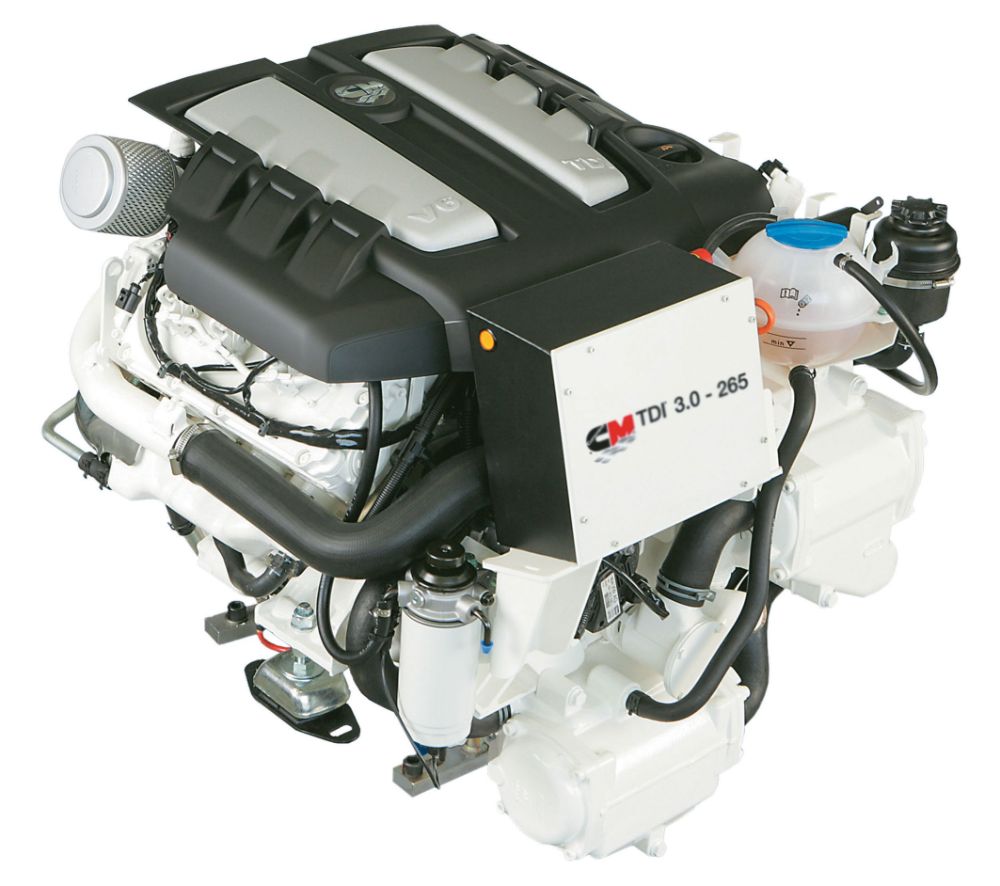
Which fuel makes most sense?
There used to be a resounding case for modern, lightweight, high-tech diesels, but now, particularly in many countries where excise-duty relief on off-road diesel has been rescinded, the case is no longer so compelling. However, I visit Europe quite often and have certainly noticed that the RIB and high-horsepower outboard categories over there seem to be markedly stronger than before, and one logical conclusion could be that many previous owners of large diesel-powered boats, now with realigned boating criteria, have decided that RIBs with large petrol outboards will keep their cruising fervour alive.
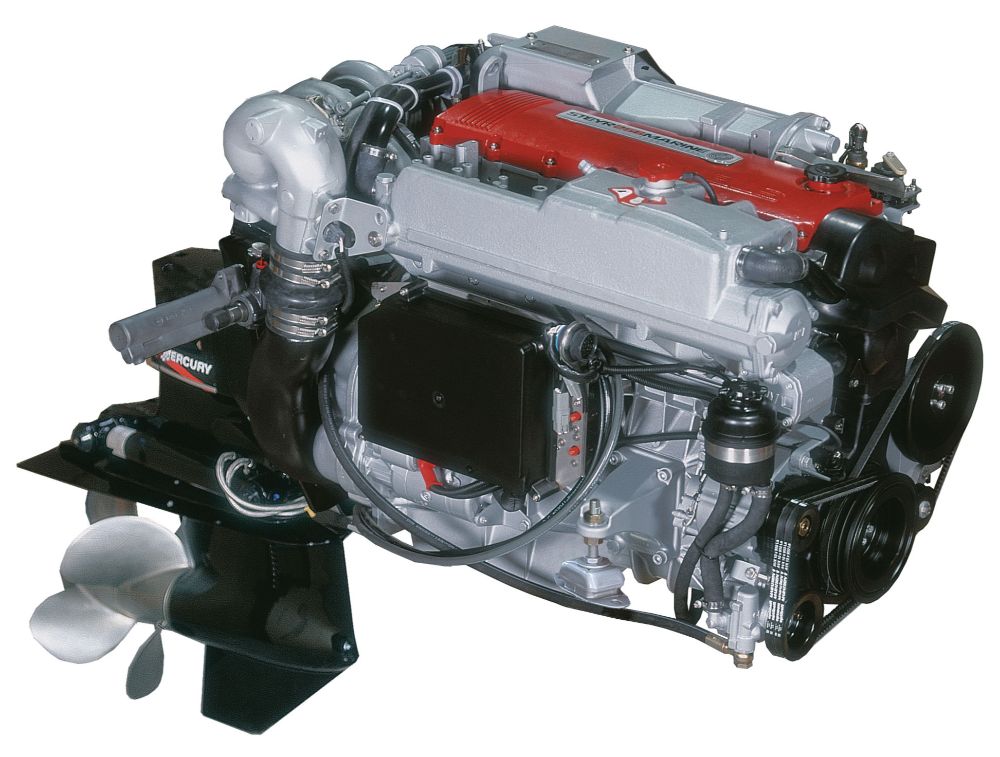
Diesel sterndrive or petrol outboard?
For the purposes of this exercise, we will be talking about sports boats, sub-12m cabin boats and RIBs. We will not concern ourselves with hypothetical exercises on the pitfalls and practicalities of replacing existing sterndrive units with outboards, or with projects that involve repowering old sterndrive cruisers with outboards on brackets.
Honestly, on all but the largest and most specialised craft (those where key factors are out-and-out commercial work, large fuel range, minimal fire risk and ability to access fuel in remote areas), outboards may well be the most logical and pragmatic choice. However, if you calculated it purely one-dimensionally and simplistically, a 200hp 4-stroke outboard will have a fuel burn of approximately 70L/h at wide-open throttle against approximately 47L/h (33% less) for a 200hp diesel at maximum speed. In the 150hp class, the figures would be approximately 55L/h at wide-open throttle for an outboard and 35L/h for a diesel. Initially there would seem to be a hugely compelling case for a diesel sterndrive, but many factors, including initial purchase price, must also be taken into consideration.
Pros and cons apply to both types of engines, and some of them are as follows:
Diesel Sterndrive Pros
- Up-to-date automotive technology that can be experienced on the water.
- Lightweight – in some cases, not overly heavy compared with high hp V6 or V8 outboards.
- Freshwater cooling through heat exchanger is standard.
- High-output alternator.
- Due to torque characteristics of the engine, larger boat loads have less effect on high speed.
- Will deliver power that surpasses most old petrol sterndrives.
- Reduced fire risk.
- Fuel can be obtained virtually anywhere – even in remote areas.
Diesel Sterndrive Cons
- Many modern performance diesels are of quite small displacement and need to be worked hard – constantly high RPM (compared with automotive use) may affect long-term durability.
- Large torque load and high exhaust heat can damage sterndrive innards and propeller bushings.
- Too much power lost through a) the universal joint and b) two sets of gears
- Lower unit and propeller cannot tilt clear of the water.
- For boats kept afloat, the only thing stopping water coming in is the large rubber umbilical tube (bellows) on the sterndrive gimbal housing.
- Despite still being theoretically a simple “pressure-ignition” system, all modern, common-rail DI diesels are virtually wholly dependent on electrical energy.
- The lack of sulphur (and the correspondingly reduced lubrication properties for fuel system components) in modern diesel fuel can be hugely detrimental to high-tech diesels.
- Technology-wise, completely beyond the remit of the layman.
- Pricing on some spare parts can beggar belief.
- Expensive – would require a significant number of extra running hours per year (usually beyond what most non-commercial boaters would do) to justify the cost over an outboard.
Outboard Pros
- Lightweight and fully self-contained.
- Most are pure-bred marine engines (not marinised automotive units).
- Designed and built solely to perform a specific purpose in a harsh environment.
- Lower unit tilts completely clear of the water when moored (no growth, corrosion, electrolysis).
- No intrusion into cockpit/working area of boat.
- Relatively easy installation, removal and replacement.
- Easy to adjust optimum transom height and set-up, even after installation.
- Propeller selection more straightforward and less “finicky” than on diesel sterndrive.
- The concept is more easily grasped by first-time buyers, novices and laypeople.
- Better service coverage and back-up.
- In comparison with sterndrives, relatively cheap spare parts and accessories.
- In many cases (e.g. under 7m), better resale potential than for sterndrive version of same boat.
Outboard Cons
- Relatively mediocre actual alternator output (a medium-to-large fuel-injected outboard can require over 15 amps just to run the electronics and fuel system on the motor).
- Modern 4-strokes and DFI 2-strokes have run riot with technology – no longer simple to repair.
- The chances of a modern 4-stroke or DFI 2-stroke ever recovering from a major dunking are slim.
- Fuel injection systems are intolerant of all but the cleanest, freshest fuel – good filtration is vital.
- Ethanol-blended fuels (such as E10) can be a nightmare – they are hydroscopic, absorb moisture and attract water. Also, E10 fuel is an “oxygenate” that can cause lean running and detonation.
• Due to modern engine electrical systems, battery life, type and condition have become more crucial factors than ever.
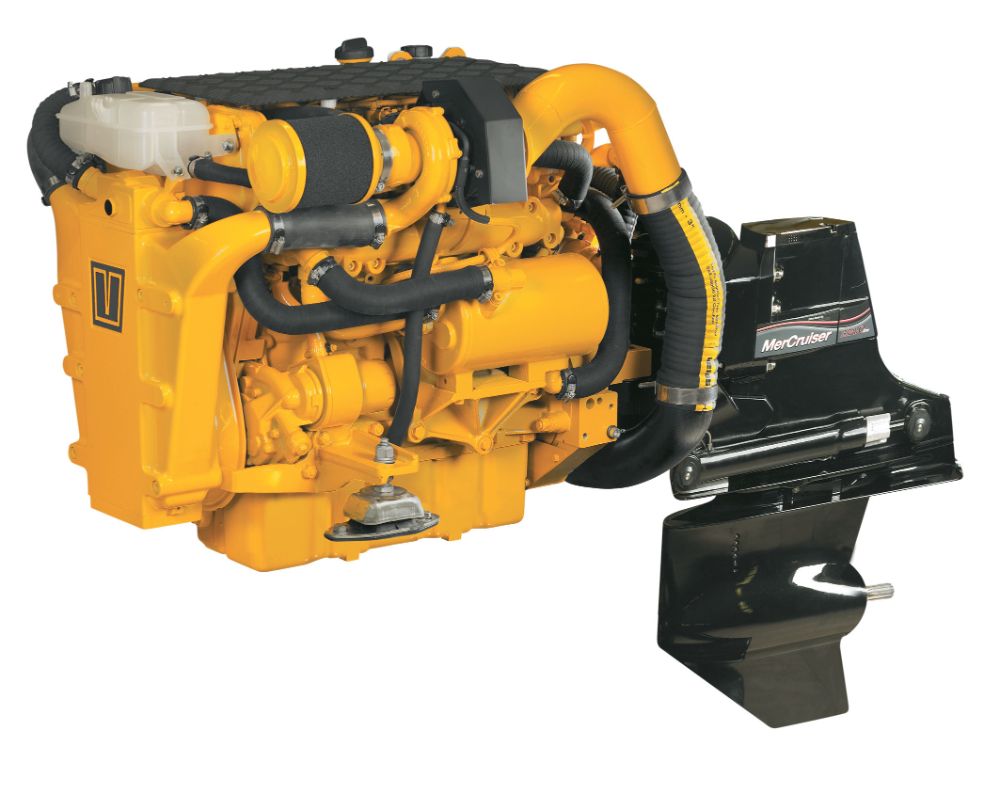
And the winner is……
Much as this writer wishes to be the embodiment of a deliberate, decisive, unambiguous adjudicator, there is always – thankfully – the “cop-out” clause! I am an unabashed advocate of the outboard motor but will concede that, once past a certain point in relation to boat size, usage, cruising range and ability to find fuel almost anywhere, the whole concept of the diesel sterndrive is unequalled by any other mode of power (including jets and conventional shafts and props). There is also the matter of onboard comforts in a cruising-oriented, live-aboard boat, and the inability of outboards to supply water from a relatively low-pressure and small-volume cooling system to a heat exchanger (for hot water and washing facilities) is something that will always militate against them for serious live-aboard boating.
The above being said, though, it is my belief that light, fast boats and outboards belong together in the same way that the Rugby World Cup and the All Blacks seem to be eternally intertwined. No doubt about it: if there were two versions of exactly the same boat, one with an outboard and one with a diesel sterndrive, I’d take the outboard every time. When it comes time to trade up or move on, the process of recouping money will also be that much easier. There is, however, little doubt that the unrelenting onslaught of dazzling, dynamic, diminutive diesel powerhouses will definitely make the job of the outboard manufacturers that little bit harder.
